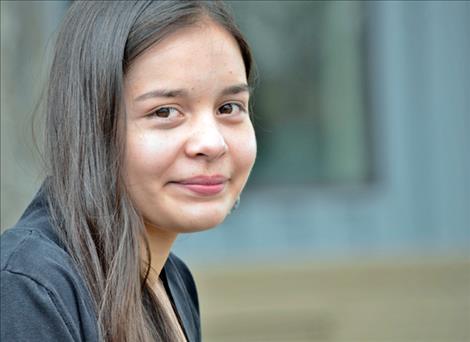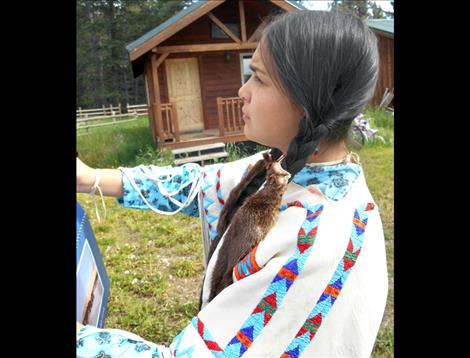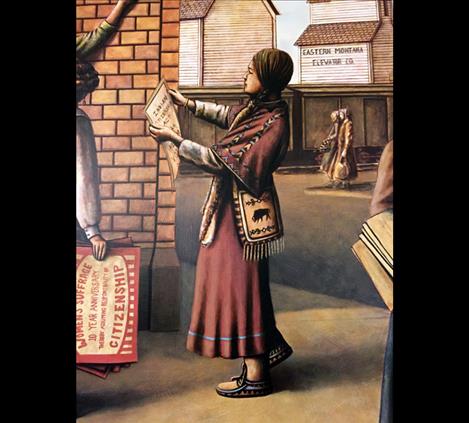Locals contribute to historic mural
Hey savvy news reader! Thanks for choosing local.
You are now reading
1 of 3 free articles.
Look closely at the recently unveiled Montana Women’s Mural on the wall of the third floor of the Capitol building and you might recognize one of the figures. Mural artist Hadley Ferguson of Missoula painted Shaniya Decker, 15, into a scene to help depict the everyday contributions women have made in building the State of Montana.
“She is a neat figure in the second panel,” Hadley said. “I wanted a younger female with her future ahead of her for the figure and Shaniya fit well in that role.”
Shaniya, a Mission High School student, represents Native American women in the multicultural themed mural where she is holding a poster with the words “Indian Citizenship Act.” Her traditional style dress is made of cloth, which became common in the 1920s setting.
“She is in the action of putting up one of the ‘get out the vote’ posters,” Hadley said. “We originally wanted to set it in 1914 when women had the right to vote, but Native Americans couldn’t vote until 1924, so we moved the time period up when Native American women were voting at the same time as everyone else.”
Shaniya has a personal connection to the scene.
“A couple generations ago people in my family couldn’t vote,” she said. “This was an important issue.”
Hadley went to Shaniya’s house and had her pose for the photos she used in the development of the scene.
“I got to look at a first draft of the mural, but I wondered how she was going to evolve the character. I liked how it turned out. I really liked that every character told their own story.”
While Hadley was busy painting the mural for the past year, Shaniya started high school where she became president of the Indian Club, signed up for driver’s education and traveled the state to compete in several sports.
“I know I want to go to college,” she said. “I’ve thought about being a lawyer or maybe social work.”
One central scene dominates each mural surrounded by several smaller scenes. Salish educator Julie Cajune from Arlee was a consultant on the project for the Native American scenes.
“I wanted to make sure that Indian people were well represented,” Julie said. “I didn’t want Indian women to be shown as just craftspeople. They were also activists. We also wanted to show how the cultures came together into something positive.”
Julie was part of a committee that met several times to negotiate how women should be represented.
“We looked at what women did, in general,” she said. “We wanted to have something for women to be proud of in the state.”
Many people were involved in the committee.
“I came in on the tail end of the political work it took to get women represented in our state Capitol,” she said. “It was a collaborative effort to represent what women have done for our state. I hope the murals will be there long after I’m gone for generations of women to see.”
Another scene shows women digging bitterroot.
“Hadley wanted to see how it was dug, so we went out on a nice day and dug bitterroot,” Julie said. “She was so attentive to detail. She wanted to see how the cloth on a dress would move in the wind.”
Thirty-eight small paint brushes wore out in the process of painting the details on the two 5-by-10-foot murals showing how women developed Montana through culture and community.
“We wanted to show the contributions women have made in work, family and politics,” Hadley said.
The first panel shows earlier life in Montana when women were trading goods, sewing the Montana flag and harvesting sugar beets. The second panel, the one with Shaniya, is a town scene reflecting politics, education and work, which included canning peaches and identifying medicinal plants.
The murals are part of the permanent collection in the Capitol building.
“It’s pretty cool I get to live on forever as a character in the painting,” Shaniya said.


















